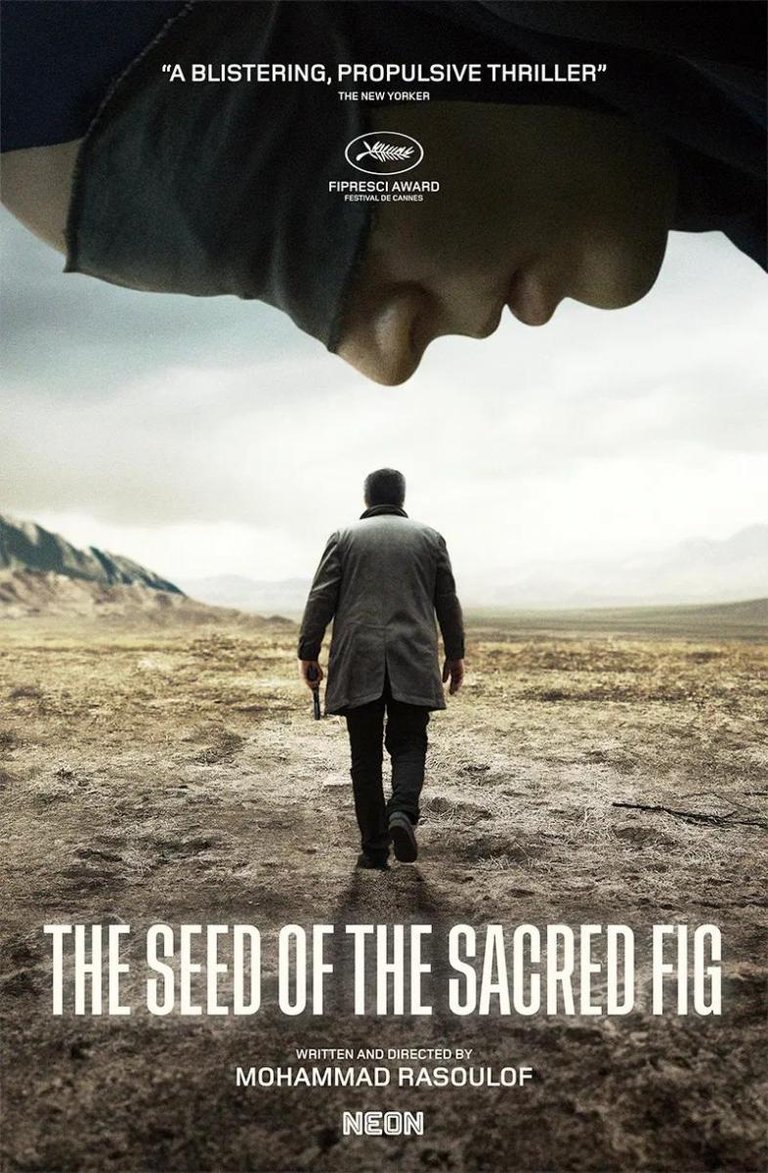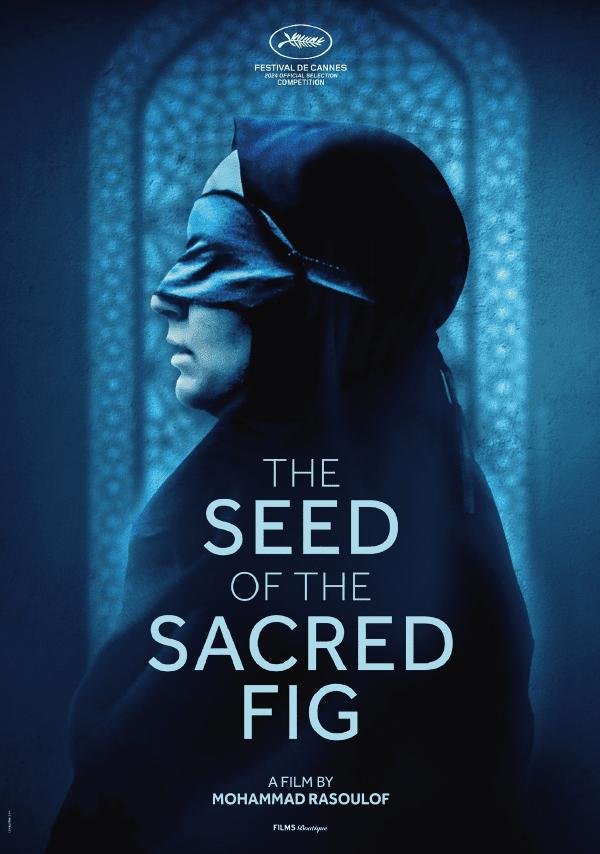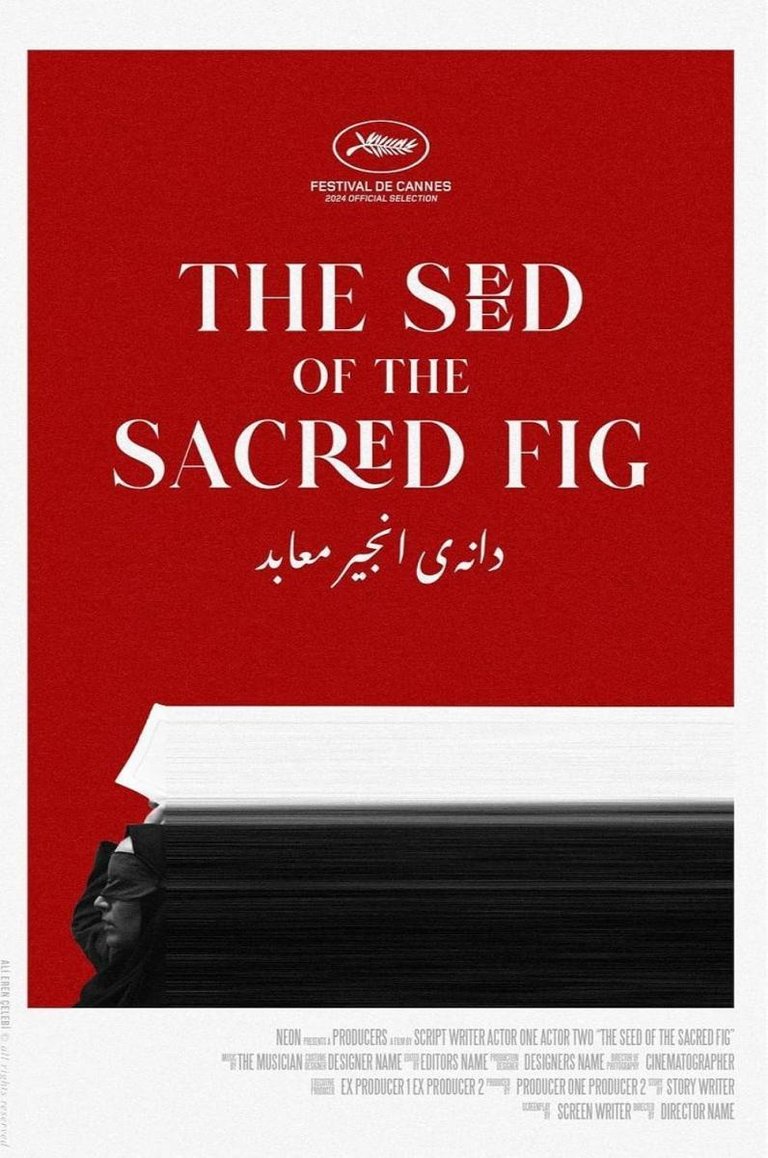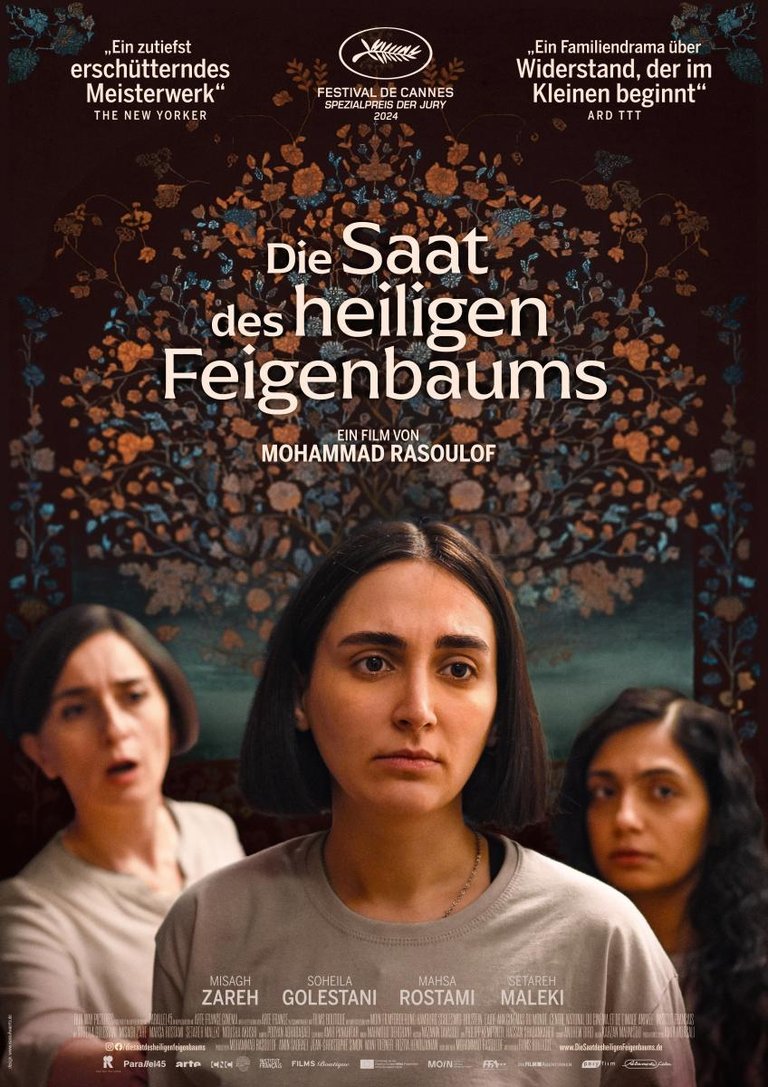
Nominada a Mejor Película Internacional en los premios de la Academia
Last year some people wondered why Past Lives didn't compete for the Oscar for Best International Film or why South Korea didn't send it as its representative. And, although it was filmed in Korean, with Korean actors and a Korean director as well, the film was North American. According to the academy's criteria, the nationality of the film is given by the origin of the funds, that is, the money provided by the production companies. For that same reason, this year there is a German film with a Persian title and an Iranian director.
El año pasado algunas personas se preguntaron por qué Past Lives no compitió por el Oscar a Mejor Película Internacional o por qué Corea del Sur no la envió como su representante. Y es que, aunque fue filmada en Coreano, con actores coreanos y con una directora coreana también, la película era norteamericana. De acuerdo con los criterios de la academia, la nacionalidad de la película viene dada por el origen de los fondos, es decir del dinero que ponen las compañías productoras. Por esa misma razón, este año hay una película alemana con un título en persa y un director iraní.
Danaye anjir-e moabad (The Seed of the Sacred Fig) is a co-production between Germany, Iran and France; and it was the film chosen by Germany to represent them at the Academy Awards, over other great films like Sterben by Matthias Glasner, for example. Now, the curious thing is that the film tells a story set in Tehran, with Persian actors and an Iranian film director, and if the Germans chose this story to represent them, it was because they considered that the story was important and also that the film was good, and how good is it? Well, good enough to have been on the final list, leaving hundreds of films from around the world on the way. The Seed of the Sacred Fig is a political, social and family drama that turns into a thriller in the second half. It begins with Iman, a husband and father of a family who, after twenty years of practice, has been promoted to judicial investigator, the penultimate step he has to take before becoming an investigating judge, which has been his lifelong professional dream. But what should be a celebration in style, becomes a reason for precautions and warnings for his wife and daughters. The first problem is that there may be personal retaliation from people who lose some kind of court case involving Iman and the other problem is that the country's government is wildly unpopular and the promotion they just gave the man coincides with a wave of protests and political unrest in the country's capital.
Danaye anjir-e moabad (The Seed of the Sacred Fig) es una coproducción entre Alemania, Irán y Francia; y fue la cinta escogida por Alemania para representarlos en los premios de la Academia, por encima de otras grandes películas como Sterben de Matthias Glasner, por ejemplo. Ahora bien, lo curioso es que la película cuenta una historia ambientada en Teherán, con actores persas y un director de cine iraní y si los alemanes escogieron esta historia para representarlos fue porque consideraron que la historia era importante y además que la película era buena, ¿y qué tan buena es? pues lo suficientemente buena como para haber quedado en la lista final, dejando en el camino a cientos de películas de todo el mundo. The Seed of the Sacred Fig es un drama político, social y familiar que se tiñe de thriller en la segunda mitad. Empieza con Iman, un esposo y padre de familia que, tras veinte años de ejercicio, ha sido ascendido a investigador judicial, el penúltimo paso que tiene que dar antes de convertirse en juez de instrucción, lo que ha sido su sueño profesional de toda la vida. Pero lo que debería ser una celebración por todo lo alto, se convierte para su esposa y para sus hijas en motivo de precauciones y advertencias. El primer problema es que puede haber represalias personales por parte de las personas que pierdan algún tipo de proceso judicial en el que se involucre Iman y el otro problema es que el gobierno del país es tremendamente impopular y el ascenso que acaban de darle al hombre coincide con una ola de protestas y disturbios políticos en la capital del país.
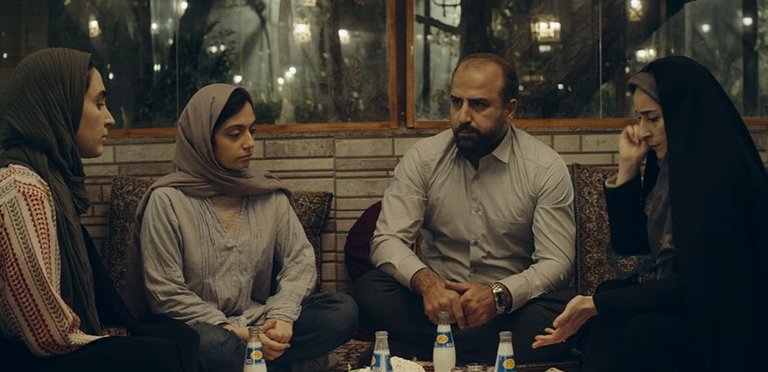
Theocratic governments are usually unstable. When the same authority represents the state, the law and God, ignoring it is both a crime and blasphemy. When the government establishes laws, decrees, curfews or social measures because they are the will of God they believe they are doing something unquestionable. But in the 21st century, in the midst of globalization, the fight for human rights and freedom of thought, people tend to question everything. Even the god himself. Especially the god himself, I would say.
Los gobiernos teocráticos suelen ser inestables. Cuando una misma autoridad representa al estado, la ley y a Dios, desconocerla es a la vez un crimen y una blasfemia. Cuando el gobierno establece leyes, decretos, toques de queda o medidas sociales porque son la voluntad de dios creen estar haciendo algo incuestionable. Pero en pleno siglo XXI, en medio de la globalización, la lucha por los derechos humanos y la libertad de pensamiento, las personas suelen cuestionarlo todo. Incluso al propio dios. Especialmente al propio dios, diría yo.
In 2022 Jina Mahsa Amini, an Iranian woman, was arrested and tortured to death in Tehran at the hands of official Islamic religious police forces, the reason? Not wearing her hijab correctly. Without going into too much detail, but to contextualize a little, a hijab is a veil that covers the head and chest of Muslim women and they must always wear it in the presence of people who are not of their direct family. That is, at home, with their husband and children, they can not wear it, but when there are visitors or when they go out in the street they must wear it compulsorily and must completely cover their hair. For centuries, Muslim women have worn the hijab with submission and obedience, but in recent decades, the veil has begun to be interpreted as a symbol of the theocratic and patriarchal oppression of Islamic politics. More and more women, and not only young girls, have stopped wearing it as a symbol of their freedom, a freedom that has been curtailed by a host of political and religious measures established in theocratic governments headed by men. The murder of Misha Amini appears in the film, as does actual footage of the protests and riots that were savagely repressed by the police, even with firearms, resulting in dozens of deaths and injuries and hundreds of arrests. Faced with such an increase in the number of cases to investigate and as a measure to intimidate those who dare to challenge the government's authority, Iman is instructed to sign the convictions of the cases he receives, without even investigating them. He's no longer a judge or judge's assistant, but merely an executioner.
En 2022 Jina Mahsa Amini, una mujer iraní, fue arrestada y torturada hasta morir en Teherán a manos de cuerpos oficiales de la policía religiosa islámica, ¿el motivo? No usar su hiyab correctamente. Sin entrar en mucho detalle, pero contextualizando un poco, un hiyab es un velo que cubre la cabeza y el pecho de las mujeres musulmanas y ellas deben usarlo siempre en presencia de personas que no sean de su familia directa. Es decir, en su casa, con su marido y sus hijos, pueden no usarlo, pero cuando hay visitas o cuando salen a la calle deben portarlo de forma obligatoria y deben cubrirse completamente el cabello. Durante siglos, las mujeres musulmanas han portado el hiyab con sumisión y obediencia, pero en las últimas décadas, el velo ha comenzado a ser interpretado como un símbolo de la opresión teocrática y patriarcal de la política islámica. Cada vez más y más mujeres, y no sólo las jóvenes, han dejado de portarlo como un símbolo de su libertad, una libertad que se ha visto reducida por un montón de medidas políticas y religiosas establecidas en gobiernos teocráticos encabezados por hombres. El asesinato de Misha Amini aparece en la película, al igual que secuencias reales de las protestas y los disturbios que fueron reprendidos salvajemente por la policía, incluso con armas de fuego, ¿el resultado? decenas de muertos y heridos y centenares de detenidos. Ante tal aumento en el número de casos que investigar y como medida para amedrentar a quienes se atrevan a desafiar la autoridad del gobierno, a Iman le instruyen a firmar las condenas de los casos que reciba, sin siquiera investigarlos. Ya no es juez ni ayudante del juez, sino un simple verdugo.
/movietalkies/media/media_files/2025/01/21/the-seed-of-the-sacred-fig-rev-6.jpg)
The situation troubles Iman who wants to do the right thing, but after twenty years working for the state, he has blind trust (such as a religious faith) in the institution, so he begins to generate rejection and antipathy towards protestants and the people who support them. For him, questioning the government is questioning God. Speaking ill of the Ayatollah, the highest political-religious authority in the country, is a blasphemy against Allah. And this attitude intensifies when he discovers that two of the people who most question the government and most want to express themselves in favor of a freer society, especially for women, are in his own home: his daughters, Rezvan and Sana.
La situación conflictúa a Iman que quiere hacer lo correcto, pero tras veinte años trabajando para el estado, tiene una confianza ciega (tal como una fe religiosa) en la institución, así que comienza a generar rechazo y antipatía ante los protestantes y las personas que los apoyen. Para él, cuestionar al gobierno es cuestionar a Dios. Hablar mal del ayatolá, la máxima autoridad político-religiosa del país , es una blasfemia contra Alá. Y esta actitud se recrudece cuando descubre que dos de las personas que más cuestionan al gobierno y más quieren expresarse a favor de una sociedad más libre, especialmente para las mujeres, están en su propia casa: sus propias hijas, Rezvan y Sana.
The Seed of the Sacred Fig is a film that contains a great message that is further strengthened by what happened around the film. It was written and directed by Mohammad Rasoulof, who last year was again sentenced to prison for creating material (films) labeled as propaganda against the system. Rasoulof has been imprisoned before for the same reason, but this time he preferred to go into exile rather than be arrested. For that reason the film had to be shot in secret. Soheila Gholestani, who plays Najmeh, Iman's wife, was also arrested in the past for participating in protests against the wearing of the hijab. This is what makes the story so relatable and so real, an image that is reinforced by the actual footage of the protests. Admittedly, especially in the first hour, the film has an Asghar Fahradi vibe - I say this as a positive comparison - but if anything The Seed of the Sacred Fig has a flaw it may be a slight unevenness. The first part shows the political, social, ideological, theocratic conflict and establishes the cracks in the family nucleus of the protagonists in the midst of a reality that cannot be ignored; but when the film moves to the more personal, to that claustrophobic family thriller of the last hour, it becomes perhaps too allegorical and in those allegories may find unsatisfied viewers. But, no matter how much that last part of the film is questioned, there's no denying that we are in front of a great story, a pretty good script and a reality that is worth seeing, knowing and spreading just because they wanted to silence it, have any of you already seen this film? I'll read you in the comments.
The Seed of the Sacred Fig es una película que contiene un gran mensaje que cobra fuerza además por lo ocurrido alrededor de la película. Fue escrita y dirigida por Mohammad Rasoulof, quien el año pasado fue nuevamente sentenciado a prisión por crear material (películas) catalogado como propaganda contra el sistema. Rasoulof ha estado preso antes por la misma razón, pero en esta oportunidad prefirió exiliarse antes que ser detenido. Por esa razón el rodaje de la película tuvo que hacerse en secreto. Soheila Gholestani, quien interpreta a Najmeh, esposa de Iman, también fue arrestada en el pasado por participar en manifestaciones contra el uso del hiyab. De allí que la historia resulte tan cercana y tan real, imagen que se refuerza con las secuencias reales de las protestas. Es cierto que, sobre todo en la primera hora, la película tiene una vibra a Asghar Fahradi - lo digo como una comparación positiva - pero si acaso The Seed of the Sacred Fig tiene un defecto puede ser una leve irregularidad. La primera parte muestra el conflicto político, social, ideológico, teocrático y establece las grietas en el núcleo familiar de los protagonistas en medio de una realidad que no puede ser ignorada; pero cuando la película se mueve hacia lo más personal, a ese claustrofóbico thriller familiar de la última hora, se vuelve quizás demasiado alegórica y en esas alegorías puede encontrar espectadores insatisfechos. Pero, por más que se cuestione esa última parte de la película, no se puede negar que estamos antes una gran historia, un guion bastante bueno y una realidad que vale la pena ver, conocer y difundir tan sólo por el hecho de que hayan querido silenciarla, ¿alguno de ustedes ya ha visto esta película? Los leo en los comentarios.
